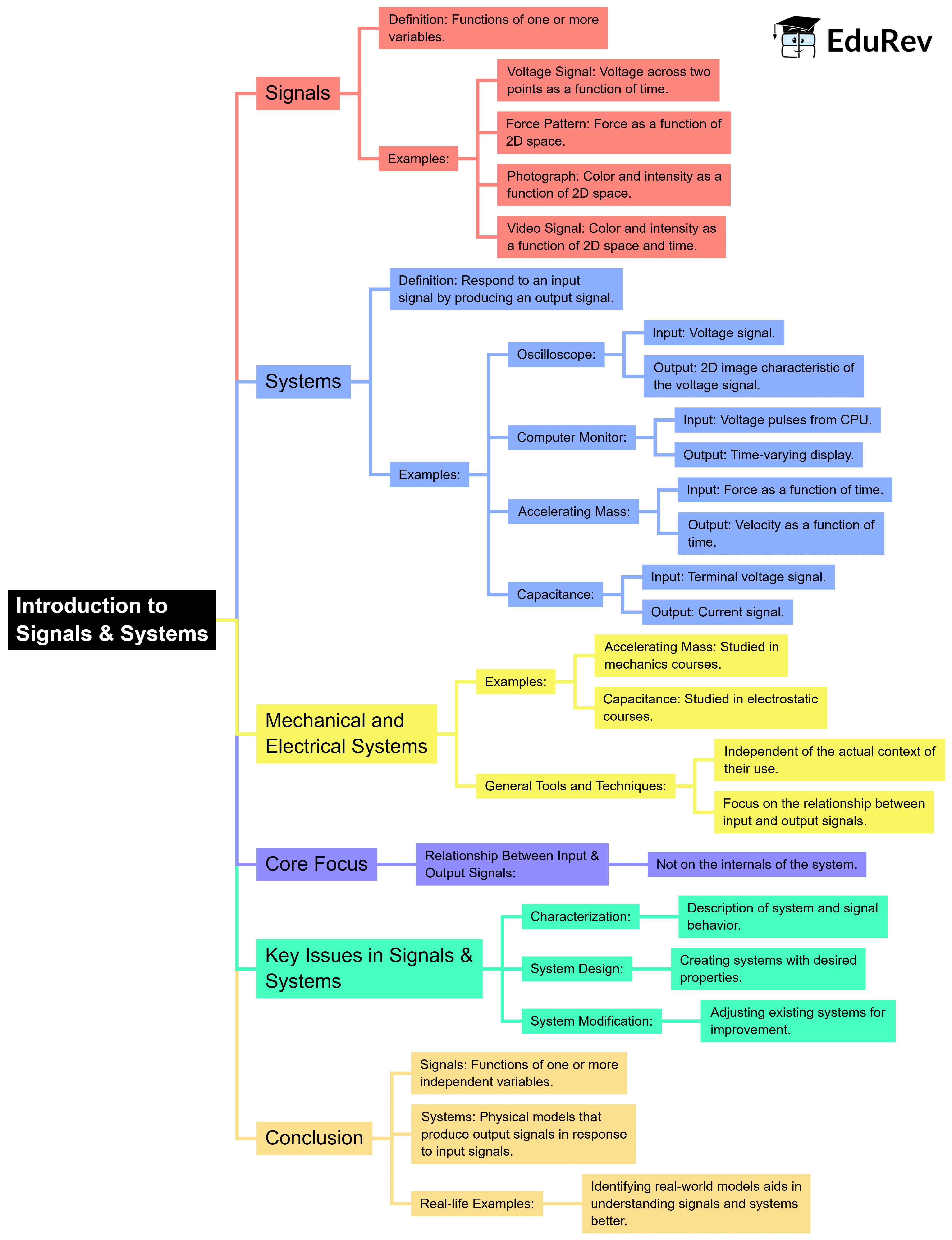Electrical Engineering (EE) Exam > Electrical Engineering (EE) Notes > Signals and Systems > Mind Map: Introduction to Signals & Systems
Mind Map: Introduction to Signals & Systems | Signals and Systems - Electrical Engineering (EE) PDF Download

The document Mind Map: Introduction to Signals & Systems | Signals and Systems - Electrical Engineering (EE) is a part of the Electrical Engineering (EE) Course Signals and Systems.
All you need of Electrical Engineering (EE) at this link: Electrical Engineering (EE)
|
41 videos|70 docs|33 tests
|
FAQs on Mind Map: Introduction to Signals & Systems - Signals and Systems - Electrical Engineering (EE)
| 1. What are the basic concepts of signals in electrical engineering? |  |
Ans.Signals are functions that convey information about the behavior or nature of a phenomenon. In electrical engineering, they can be classified into continuous-time and discrete-time signals. Continuous-time signals are defined for every instant of time, while discrete-time signals are defined only at discrete intervals. Understanding these concepts is fundamental for analyzing and processing signals.
| 2. What is the significance of linearity and time-invariance in systems? |  |
Ans.Linearity means that the output of a system is directly proportional to its input, which allows for the superposition principle to be applied. Time-invariance indicates that the system's behavior does not change over time, meaning that if an input signal is delayed, the output will also be delayed by the same amount. These properties are crucial for simplifying the analysis and design of systems.
| 3. How do we classify signals and systems? |  |
Ans.Signals can be classified as analog or digital, periodic or aperiodic, and deterministic or random. Systems can be classified based on their properties, such as linear vs. nonlinear, time-invariant vs. time-variant, and causal vs. non-causal. This classification helps in selecting appropriate methods for analysis and design.
| 4. What is the role of the Fourier Transform in signals and systems? |  |
Ans.The Fourier Transform is a mathematical tool used to transform signals from the time domain to the frequency domain. It provides insight into the frequency components of a signal, enabling engineers to analyze and process signals more effectively. The Fourier Transform is essential for understanding system behavior and designing filters.
| 5. What are some common applications of signals and systems in electrical engineering? |  |
Ans.Signals and systems concepts are widely used in various applications, including communications (modulation and demodulation), control systems (feedback and stability analysis), audio and image processing (filtering and compression), and radar systems. Understanding these principles allows engineers to innovate in technology and improve existing systems.
Related Searches
















